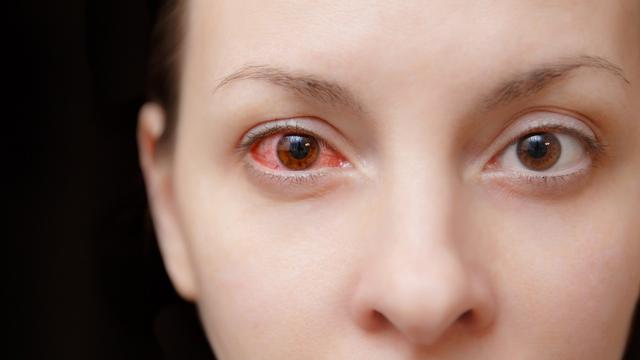N
early six in 10 people diagnosed with pink eye in the United States are prescribed antibiotic eye drops, according to a
recent study in
Ophthalmology
, even though the drugs are rarely needed to treat the common infection. In some cases, the authors say, this type of treatment could actually prolong symptoms and make them worse.
The study examined data from more than 340,000 people diagnosed with acute conjunctivitis, known as pink eye, between 2005 and 2014. Of that group, 58% filled a prescription for antibiotic eye drops. Even more concerning to the researchers was that 20% of those prescriptions were for antibiotic-corticosteroid drops, a combination that’s not typically recommended for pink eye because it can worsen underlying infections. If taken for long periods, these drops may increase the risk of cataracts and glaucoma.
The findings are consistent with a nationwide trend of
overprescribing antibiotics
for common bacterial infections (and viral ones, against which they don’t even work). But it was still surprising for the study authors to see how widespread an issue it’s become for pink eye, a condition that affects 6 million Americans every year.
Get our Health Newsletter.
Sign up to receive the latest health and science news, plus answers to wellness questions and expert tips.
Please enter a valid email address.
* The request timed out and you did not successfully sign up. Please attempt to sign up again.
Sign Up Now
An unexpected error has occurred with your sign up. Please try again later.
Check the box if you do not wish to receive promotional offers via email from TIME.
You can unsubscribe at any time. By signing up you are agreeing to our
Terms of Service
and
Privacy Policy
. This site is protected by reCAPTCHA and the Google
Privacy Policy
and

Terms of Service
apply.
Thank you!
For your security, we've sent a confirmation email to the address you entered. Click the link to confirm your subscription and begin receiving our newsletters. If you don't get the confirmation within 10 minutes, please check your spam folder.
“The proportion of patients who filled prescriptions for antibiotics was indeed much higher than we had expected,” said co-author Dr. Joshua Stein, director of the Center for Eye Protection and Innovation at the University of Michigan, in an email. That may be because many patients with pink eye are diagnosed and treated by a primary care physician, pediatrician or urgent-care provider, and never see an ophthalmologist or optometrist.
That was the case with 83% of people in the study. Those who hadn’t seen an eye specialist were two to three times more likely to fill prescriptions for antibiotics.
The odds of filling an antibiotic prescription also depended on people’s socioeconomic status. Those who were white, younger, affluent and better educated were more likely to get unnecessary meds. The odds did not, however, depend on factors that could actually increase a person’s risk of serious infection: whether patients had diabetes or HIV or wore contact lenses, for example.
MORE
:
Contact Lenses Fill Your Eyes With Bacteria
Pink eye is usually caused by a virus, says Stein, and tends to clear up in a week or two without treatment. Antibiotics won’t speed healing—or prevent the infection from spreading—except in rare cases in which pink eye is caused by bacteria.
“For most cases of pink eye, we simply recommend cool compresses and artificial tears to help alleviate some of the symptoms,” he says, “and lots of hand washing and not sharing towels or linens with others to reduce the risk of spread to close contacts.”
Doctors who are unsure of an infection’s cause may prescribe antibiotics “just in case,” the authors wrote in their paper, or patients might ask for them in hopes of a quicker recovery. Some schools also don’t allow children into classrooms without proof that they’ve been treated, a policy that an accompanying editorial called “highly inconvenient for patients and parents” and “devoid of evidence.”
Most patients won’t experience negative effects from a short course of unnecessary antibiotics, Stein says, but there are risks. The drugs can cause cells on the surface of the cornea to slough off, leading to irritation, blurry vision and an increased risk of infection. They can also cause allergic reactions, kill off good bacteria on the surface of the eye and contribute to antibiotic resistance. Plus, he adds, they can be expensive—more than $200 per bottle, in some cases.
Stein says patients who are prescribed antibiotics for pink eye should feel comfortable asking their doctor how confident he or she is that the infection is caused by bacteria and not by a virus. (If pus is present, he says, a bacterial infection is more likely; if discharge is watery, it’s probably a virus or allergy.)
There is a test to identify the most common virus responsible for pink eye, but Stein says he doesn’t usually use it unless a patient’s symptoms last more than two weeks. But if people want to be more certain as to whether antibiotics will help them, he says, “they can inquire with their doctor whether such a test can be performed.”
Subscribe to
TIME
Contact us
at
letters@time.com
.
SHARE THIS STORY









